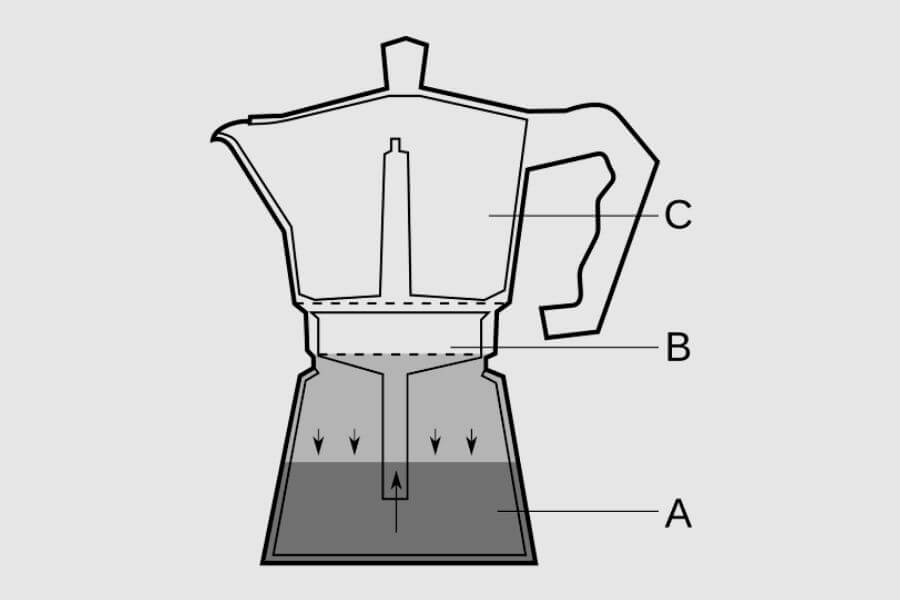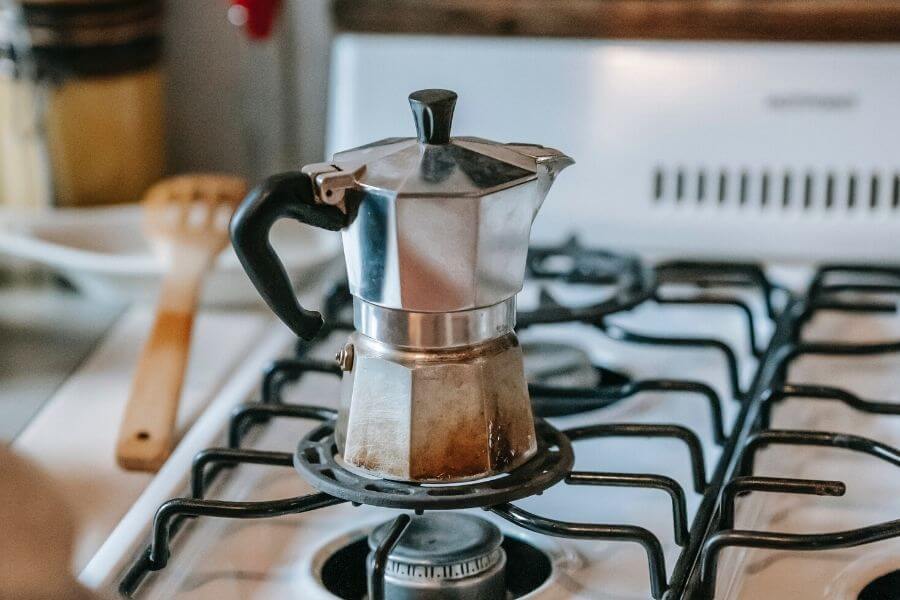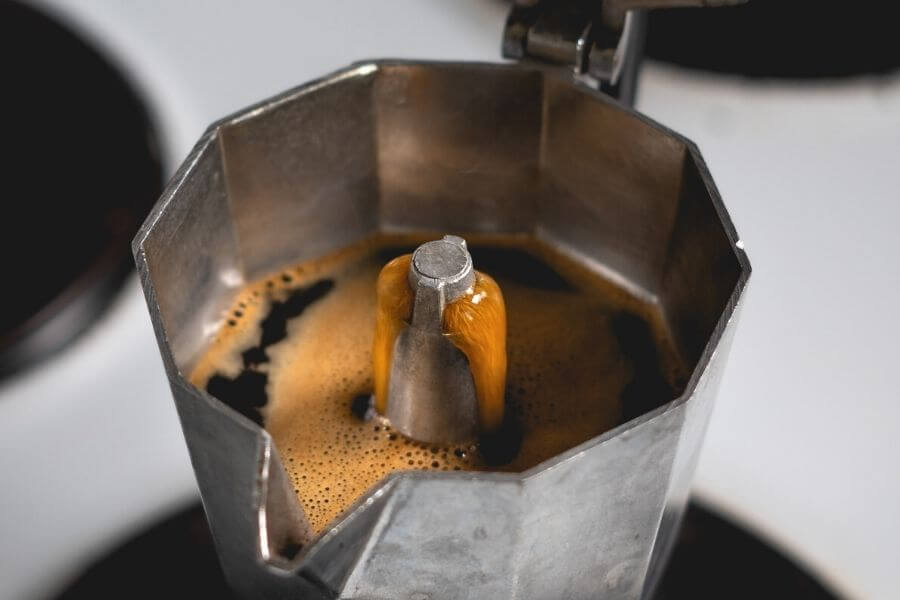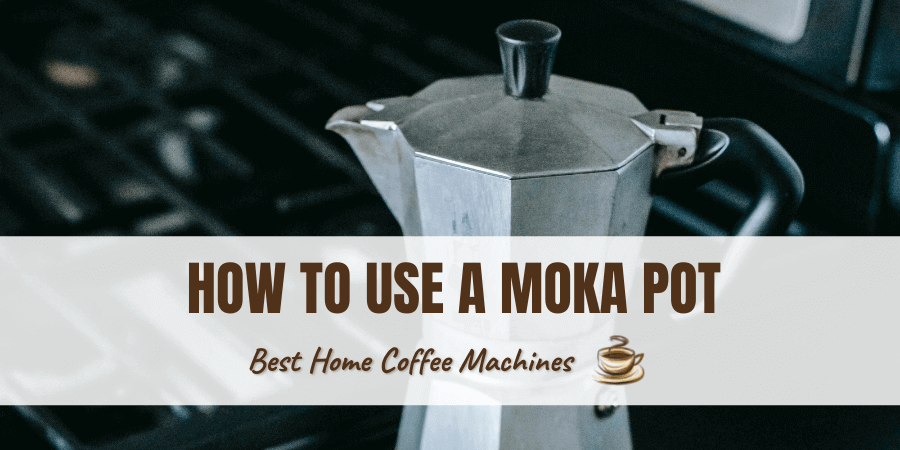How To Use a Milk Frother: Pro Tips and Tricks
Known for brewing rich java that resembles espresso, the moka pot is a treasured style of coffee maker from Italy.
Moka coffee is affordable, simple to make, and it packs a punch in terms of flavor. Maybe you’ve already been introduced to this robust beverage, but if not, you’re in for a treat.
But exactly what is a moka pot?
Moka pots have other names like stovetop espresso maker, and they rely on their eight-sided design to evenly distribute flavor and aroma in coffee as it brews. Pressure brewing uses the heat and pressure generated by a hot stove to force water through coffee grinds to brew coffee.
While most of these Italian coffee makers are designed in the traditional form that dates back nearly a century, they’re available in several different sizes. They can be as small as one cup to as large as 12 to 18 cups.
Learn the ins and outs of using a moka pot in our guide, here’s what we’ll cover:
History of the Italian Coffee Maker
Italy is the moka pot’s traditional home, and these devices are extremely popular. Some reports claim that 9 out of 10 homes with coffee makers have a moka pot. Moka pots were first designed in 1933 by Alfonso Bialetti who then produced the pots under the Bialetti Industries banner.
Moka parts are traditionally made from aluminum, which conducts heat easily. Bialetti created the eight-sided design that’s still in common use today. Although it started in Italy, the moka pot’s popularity quickly spread throughout Europe after World War II and then beyond.
Parts of a Moka Pot

The original stovetop espresso maker’s eight-sided design remains popular today. Most are constructed from aluminum, but stainless steel models are also available.
A moka pot has three basic parts: a lower chamber, upper chamber, and filter funnel. The filter funnel is sometimes separated into two different parts. The lower chamber should include a safety valve that prevents too much pressure from building up.
The filter and funnel fit into the lower chamber. Then the upper chamber can be screwed onto the lower chamber.
How Does a Moka Pot Work?
Stovetop espresso makers produce java through pressurized brewing. This means hot water is forced through coffee grounds by pressure created through heat. It’s actually similar to the process that brews espresso, but less pressure is created with a moka pot.
A moka pot’s lower chamber is mostly sealed, so when the water inside heats up, steam and pressure are created. Pressure causes steam to rise up into the filter basket and begins the brewing process.
Pressure then forces hot liquid coffee into the upper chamber through the funnel. Once it reaches the top chamber, pressure is no longer a factor, so the liquid flows gently from the funnel or spout into the upper chamber.
It should be noted that moka pots are most suited for gas stoves. They can be used on electric stoves with raised burners, but it may take longer. Aluminum stovetop coffee makers will not work on induction stovetops, although many stainless steel versions will.
Choosing the Right Size Moka Pot
Because moka coffee brews best when the entire pot is used, it’s best to choose the right sized device for you. Moka pots start as small as single-cup models and can be as large as 12 to 18 cups.
However, when a description uses the word “cup,” it doesn’t mean a traditional American coffee mug. It’s referencing a much smaller cup, about the size of an espresso shot.
One cup in moka-speak is about two ounces. So when the moka pot description says it brews four cups, you can expect to probably brew no more than eight ounces of coffee.
Estimate how many ounces of java you drink, not just how many cups.
If you usually pour an eight-ounce mug of joe, you’ll be really disappointed with a three-cup stovetop espresso maker!

What You’ll Need to Make Coffee with a Moka Pot
Ready to learn how to make moka coffee at home? First, gather all the supplies you’ll need:
- Moka pot (we’ve used a six-cup model for this guide)
- Coffee grinder
- Coffee beans
- 8-10 ounces hot water
- Stovetop
- Measuring spoons
- Coffee mug or travel cup
How to Make Coffee with a Moka Pot
Pre-Planning
Step 1: Fresh is always best, so grind your coffee beans just before brewing. Grind enough beans for 1.5 to 2 tablespoons of ground coffee, depending on how strong you prefer your java. A medium-fine grind is most suitable.
Step 2: Heat your water before pouring it into the moka pot’s lower chamber. This preheats the pot, helping it brew a little faster. Do not fill the bottom chamber above the safety valve.
Brewing
Step 3: Place your filter funnel atop the moka pot’s lower chamber. Add ground coffee to the basket area. Make sure the ground coffee is level, but do not tamp the grounds. Tamping can cause an unwanted increase in pressure levels during brewing.
Step 4: Screw on the top chamber to the lower part.
Step 5: Using medium heat, set your moka pot on a stove burner. A gas stove is preferable, as previously explained. Keep the flame no bigger than the coffee maker’s base, so its handle doesn’t get too hot.
Step 6: When the water in the bottom chamber approaches boiling point, it’s forced up and through the ground coffee, and will then flow into the upper chamber. Once there are sounds of hissing or gurgling, remove the pot from heat. Wait a minute or so for all liquid to finish flowing, and then carefully pour your beverage.
Common Issues and How to Fix Them
Learning how to make moka pot coffee involves some trial and error. It’s not an exact science, so expect a few tries before you pour the perfect cup.
Here are some common problems and possible solutions:
- The drink is too bitter. You may be over-extracting the coffee by brewing it too long. Stop brewing sooner.
- Coffee is too weak. The grounds may not be spread evenly throughout the basket, or the grind level isn’t maximizing the flavors.
- Water or steam leaks from the valve. Pressure inside the moka pot may be too high. Remove from the heat immediately.
- Spurting liquid sounds. The temperature is too high. Turn down your burner or element.
Cleaning Your Stovetop Espresso Maker
Cleaning your moka pot is straightforward and uncomplicated. You do have to wash it by hand, though, as a dishwasher will damage most models. There’s also no need for soap, and you definitely shouldn’t scrub it hard.
Step 1: Let the moka pot completely cool off.
Step 2: Disassemble the coffee maker and dispose of any coffee dregs.
Step 3: Rinse each part with warm water and then dry gently. If you don’t dry them thoroughly, water can lead to corrosion.
Step 4: If any grounds remain, wipe them away with a paper towel.
Step 5: Once all parts are fully dry, put the moka pot back together, and it’s ready for its next use.

Summarizing
A moka pot is an affordable way to enjoy cafe-quality coffee at home. Moka coffee is rich and robust, and many people liken it to espresso. Technically, it’s not espresso because there’s not enough pressure generated with a moka pot, but it’s delicious nonetheless.
Learning how to make coffee in a moka pot isn’t difficult. With a little trial and error, most people get the hang of it quickly. Use freshly ground coffee beans for the best result, and add a little warm milk for an indulgent, silky coffee.
Remember to choose the right size stovetop espresso maker for you. Need help? Check out our guide to the best moka pots on the market today.
There are a variety of sizes and even different colors to choose from. Don’t forget to buy a stainless steel model if you have an induction stovetop.
Still have questions about these nifty little coffee makers? We’ve got you covered in the FAQs below!
How to Use a Moka Pot FAQs
Is Moka Coffee as Strong as Espresso?
No, moka coffee is not as strong as espresso. The moka pot only generates 1-2 bars of pressure, while a quality espresso maker will generate 9+ bars of pressure. While they are similar, a moka pot can’t extract as much flavor as an espresso maker.
Can a Moka Pot Explode?
Yes, a moka pot can explode, but thankfully, it’s very rare. Stovetop espresso makers should always have functioning safety valves to prevent pressure from getting too high. If the pressure increases too much, it will safely escape through the valve. If you notice steam or liquid leaking from the valve, immediately remove the moka pot from the heat.
Should You Tamp a Moka Pot?
No, you should never tamp the ground coffee in a moka pot. If the grounds are pressed too firmly together, the water can’t make it through the coffee. This can cause a dangerous buildup of pressure inside your coffee maker.
Do Moka Pots Make Good Coffee?
Yes, moka pots brew excellent coffee! Moka coffee is richer and stronger than drip coffee because of the pressurized brewing process. It’s similar to espresso in taste and texture. Knowing how to use a stovetop espresso maker is a coffee lover’s 101.
How Do You Know When Stovetop Espresso is Done?
You’ll know your stovetop espresso is done when you hear gurgling and hissing sounds from the moka pot as liquid coffee enters the top chamber. The top chamber should be about 80% filled with liquid, and it should be a warm golden hue.
How Long Does it Take to Make Stovetop Espresso?
It usually takes 5-10 minutes to make stovetop espresso from the time you start heating the moka pot. That does not include the time needed to grind coffee beans or preheat water for the lower chamber.





